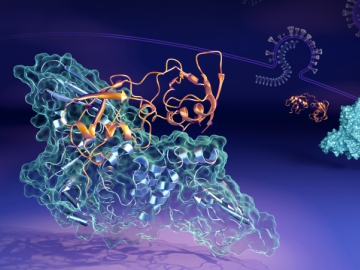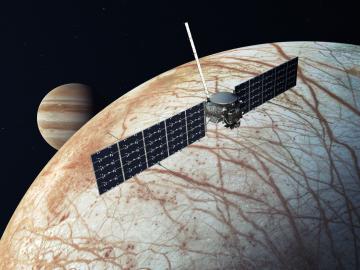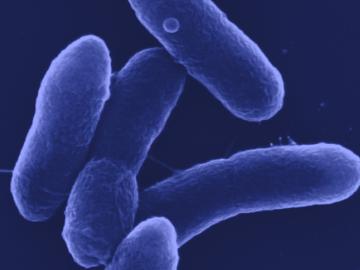
Filter News
Area of Research
- Advanced Manufacturing (3)
- Biology and Environment (22)
- Computational Biology (1)
- Computer Science (2)
- Energy Science (24)
- Fusion and Fission (2)
- Materials (38)
- Materials for Computing (5)
- National Security (23)
- Neutron Science (121)
- Nuclear Science and Technology (6)
- Quantum information Science (2)
- Supercomputing (48)
News Topics
- (-) Biotechnology (39)
- (-) Cybersecurity (35)
- (-) Exascale Computing (67)
- (-) Neutron Science (171)
- 3-D Printing/Advanced Manufacturing (146)
- Advanced Reactors (40)
- Artificial Intelligence (131)
- Big Data (79)
- Bioenergy (112)
- Biology (128)
- Biomedical (73)
- Buildings (74)
- Chemical Sciences (86)
- Clean Water (33)
- Composites (35)
- Computer Science (226)
- Coronavirus (48)
- Critical Materials (29)
- Education (5)
- Element Discovery (1)
- Emergency (4)
- Energy Storage (114)
- Environment (218)
- Fossil Energy (8)
- Frontier (64)
- Fusion (66)
- Grid (74)
- High-Performance Computing (130)
- Hydropower (12)
- Irradiation (3)
- Isotopes (62)
- ITER (9)
- Machine Learning (68)
- Materials (157)
- Materials Science (158)
- Mathematics (12)
- Mercury (12)
- Microelectronics (4)
- Microscopy (56)
- Molten Salt (10)
- Nanotechnology (64)
- National Security (86)
- Nuclear Energy (122)
- Partnerships (68)
- Physics (69)
- Polymers (35)
- Quantum Computing (53)
- Quantum Science (93)
- Security (31)
- Simulation (65)
- Software (1)
- Space Exploration (26)
- Statistics (4)
- Summit (71)
- Transportation (103)
Media Contacts

Scientists at Oak Ridge National Laboratory have uncovered how the SARS-CoV-2 virus evades the human immune system by studying the interaction between a viral protein (PLpro) and a key immune protein (ISG15). These insights could guide the development of therapeutic drugs to block this interaction, enhancing the body’s ability to combat the virus.

An ORNL-led team comprising researchers from multiple DOE national laboratories is using artificial intelligence and computational screening techniques – in combination with experimental validation – to identify and design five promising drug therapy approaches to target the SARS-CoV-2 virus.

Researchers from NASA’s Jet Propulsion Laboratory and Oak Ridge National Laboratory successfully created amorphous ice, similar to ice in interstellar space and on icy worlds in our solar system. They documented that its disordered atomic behavior is unlike any ice on Earth.

The Department of Energy’s Office of Science has selected five Oak Ridge National Laboratory scientists for Early Career Research Program awards.

Deborah Frincke, one of the nation’s preeminent computer scientists and cybersecurity experts, serves as associate laboratory director of ORNL’s National Security Science Directorate. Credit: Carlos Jones/ORNL, U.S. Dept. of Energy

A research team led by Oak Ridge National Laboratory bioengineered a microbe to efficiently turn waste into itaconic acid, an industrial chemical used in plastics and paints.

From Denmark to Japan, the UK, France, and Sweden, physicist Ken Andersen has worked at neutron sources around the world. With significant contributions to neutron scattering and the scientific community, he’s now serving in his most important role yet.

When COVID-19 was declared a pandemic in March 2020, Oak Ridge National Laboratory’s Parans Paranthaman suddenly found himself working from home like millions of others.

Scientists have found new, unexpected behaviors when SARS-CoV-2 – the virus that causes COVID-19 – encounters drugs known as inhibitors, which bind to certain components of the virus and block its ability to reproduce.

Ken Andersen has been named associate laboratory director for the Neutron Sciences Directorate, or NScD, at the Department of Energy’s Oak Ridge National Laboratory.


